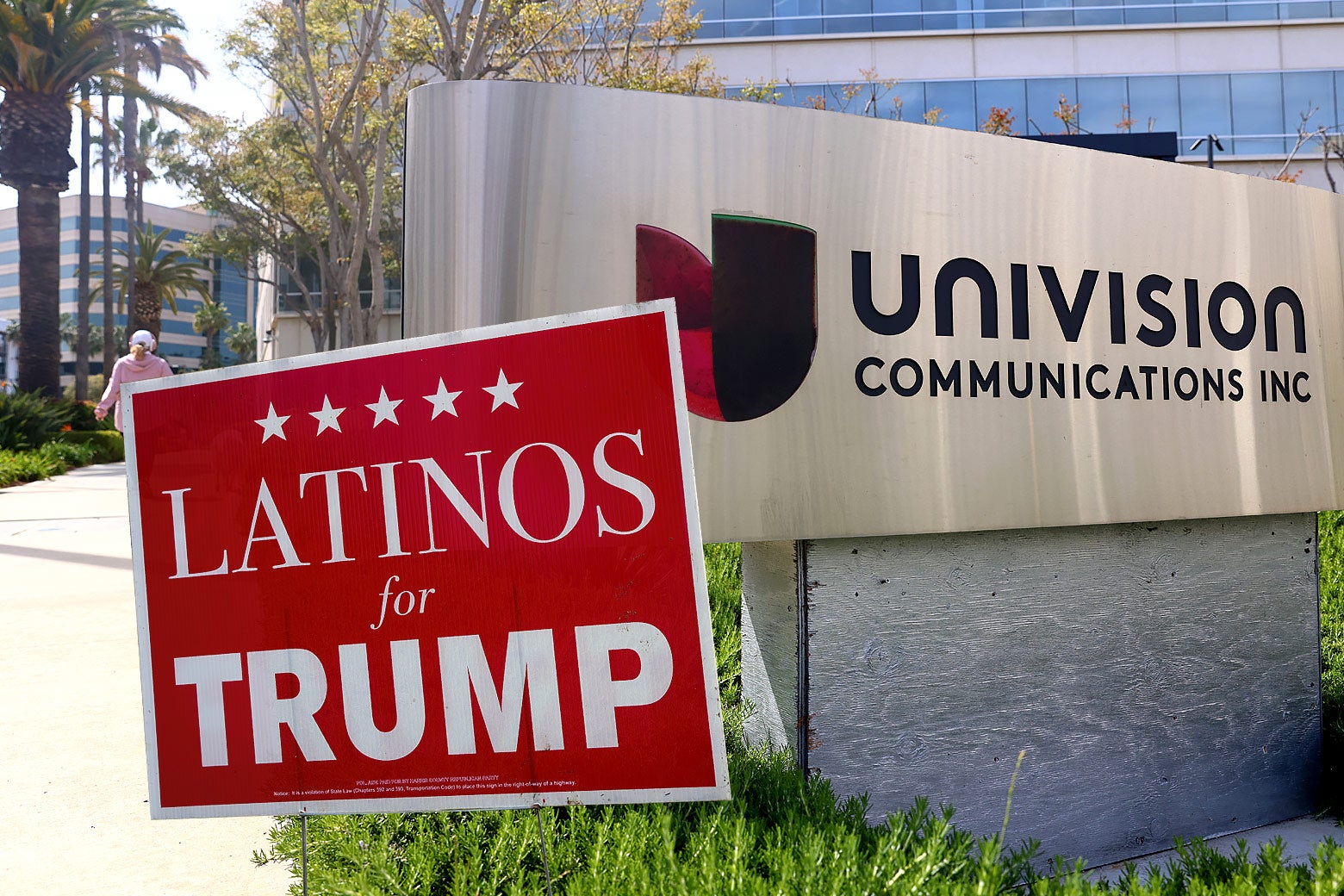Sign up for the Slatest to get the most insightful analysis, criticism, and advice out there, delivered to your inbox daily.
For a postelection analysis of how and where Democrats fell short in 2024, the New Republic’s Greg Sargent visited Reading, Pennsylvania—the majority-Latino, long-Democratic city that saw a significant swing in support toward Donald Trump this election cycle, even as Kamala Harris carried the bulk of the votes. Sargent points to myriad factors that likely cut into Latinos’ traditional Democratic support (inflation, immigration, Trump’s name-recognition advantage) but saves an especially noteworthy contributor for the very end: the Spanish-language right-wing propaganda machine.
“It’s now clear that the Democratic Party’s undeniable deficit in the information wars, in which Republicans benefit from a massive media propaganda network while dominating more apolitical cultural information spaces, extends to Latino voters in a very big way,” Sargent writes.
He cites editorial shifts from Spanish-language social media, which has been choked with disinformation around immigration influxes and economic policy, and the iconic broadcaster Univision, which took a less abrasive and friendlier approach to Trump after merging with the Mexican company Televisa in 2021. That turn has been quite profitable for the TelevisaUnivision conglomerate, which recently acknowledged revenue gains from GOP advertising in the U.S. even as business has declined in its native Mexico.
It reaches even beyond that. Spanish-speaking conspiracists involved with Republican politics have wildly popular YouTube channels and radio shows. Plus, much like South Asian Americans, Latino Americans tend to communicate with family from their home countries via native-language WhatsApp groups—and spread political misinformation there. The result is a lie machine that closely targets nonwhite voters to great effect.
It’s not that Democrats don’t recognize this; they attempted, in 2024, to establish trustworthy Spanish-language websites and WhatsApp channels. Two years before that, a media conglomerate founded by two former party aides bought 18 Spanish-language radio stations from the TelevisaUnivision conglomerate, including the notoriously conservative Radio Mambí. Yet all these moves were too weak or ineffective by half—in Mambí’s case, the programming got even more Trumpist after the takeover.
To be clear, it is wrong and infantilizing to solely blame Spanish misinformation for the long-brewing changes in Latino voting trends. There are many reasons that Dems and political analysts have gotten Latino Americans wrong over the years. The demographic classification itself is extremely broad, encompassing white and Indigenous and Afro-Latinos, long-conservative anti-leftist refugees from Venezuela and Cuba, Democratic-loyal Mexican Americans, immigrants, U.S.–born citizens, bigots and progressives, Catholics and Protestants and atheists. (Republicans’ hypertargeting of certain messages toward specific Latino ethnicities, as well as their willingness to just try speaking and campaigning in Spanish, shows how well the GOP gets this.)
As with so-called Asian Americans, the Latino voting bloc is far more pluralistic than consultants and candidates often perceive it to be. False info stokes and plays off the real anxieties of these communities, whether they stem from economic security, public safety, religious beliefs, immigration status, or personal prejudices.
Both misinformation (false news that communities incidentally share among themselves) and disinformation (concerted propaganda campaigns) have had a significant impact. Surveys of Latino Trump voters from the past few election cycles show that unfounded fears over election fraud, power grabs by other demographic groups, anti-Catholic persecution, and Democratic Party pedophiles all influenced how these audiences marked their ballots.
This type of effective propagandizing isn’t limited to Spanish, and it isn’t all coming from Russia either. The past few U.S. election cycles have also seen misinformation circulate in Mandarin, Vietnamese, Korean, Hindi, Arabic, Hebrew, and Haitian Creole, among others. Not all of it was pushed from top down by foreign intelligence officials or domestic GOP operatives, but it all reflected the most common and craven Republican talking points, including that Democrats are interfering with the election process in order to bring back communism, the party is full of pedophiles endangering your children, and Black activists are coming after Trump supporters. This messaging is present at a truly staggering scale: boxes of propagandistic newspapers from South Korea and China, Arabic-language flyers from mysterious groups distributed around Dearborn, and Haitian vaccine conspiracists on YouTube.
It’s strikingly easy to reach and influence the millions of Americans whose primary languages aren’t English, or who don’t speak it at all. Foreign-language telecommunications infrastructure is nowhere near as regulated as English-language radio and TV. Chat networks like WhatsApp are encrypted and often easy to obscure from public view. Social media outlets had for years failed to devote ample resources to foreign-language users, even before they started rolling back moderation efforts altogether.
In general, many Americans who don’t speak any English live in areas that are relatively underresourced compared with wealthier and whiter neighborhoods, with the language barriers and resulting effects leaving them segregated off and dependent on their own self-sustaining communities. A plain attempt by any Republican candidate to translate and tailor their messages to these communities, to show up and acknowledge their conditions (however insincerely), and to activate them in the electoral bureaucracy makes a huge difference.
There’s been plenty of chatter among concerned liberals over the ways Democrats have failed to keep up with the new media landscape, whether we’re talking about audio-centric outreach to young men or breaking through to rural “news deserts” without local newspapers or gaming the YouTube and TikTok algorithms. But any concerted attempts at (re)constructing a revitalized liberal media ecosystem need to reckon with American diversity in ways that, ironically, the anti-diversity Republicans have figured out. That means speaking other languages, finely targeting messages through various media, and figuring out how to present effective counterinformation. It won’t be easy. But rebuilding a coalition never is.

